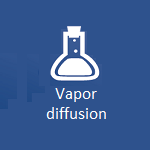![[ Polski ]](../../images/POLA001.gif)
![[ Deutsch ]](../../images/GERM001.gif) Two- and Three-Dimensional heat flow Patterns
Two- and Three-Dimensional heat flow Patterns
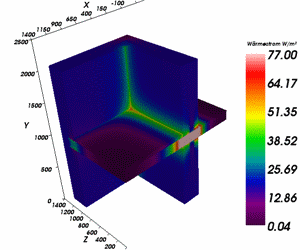
The method of analysis most commonly practiced today when evaluating the thermal performance of building spaces, components, and assemblies is based on a simple, one-dimensional, constant flow model of heat conduction (i.e. the assumption of parallel heat flow for the calculation of U-values and areas). Such an assumption often leads not only to disappointing results in the thermal quality of realized construction projects, but also to costly consequences due to
- unforeseeably high energy consumption for heating,
as well as - damage caused by surface and core condensation and moisture.
These potentially negative consequences of over-simplification, inherent to the assumption of one-dimensionality, are becoming increasingly critical in today's trend towards highly insulated building structures. If the effects of thermal bridges are neglected, drastic errors in estimating heating requirements are bound to result, particularly when assessing energy efficient buildings.
Multi-dimensional (i.e. two- and three-dimensional) evaluations of thermally critical regions within a building assembly, especially those with heat bridges, during early design phases can provide valuable preliminary information to support the decision-making process, thus leading to considerably more reliable design results.
Surface moisture due to condensation (typically occurring in such regions as floor-wall connections, window installations, etc.) as well as mould growth in humid environments can also be effectively prevented by means of multi-dimensional evaluation during planning and detail design.
Why you should model and calculate in 3D - a publication by Dr. Pont (more...) ![]()
Presentation: Comparison of the results (temperatures, fRsi) of calculation in 2D and 3D (more...) ![]()
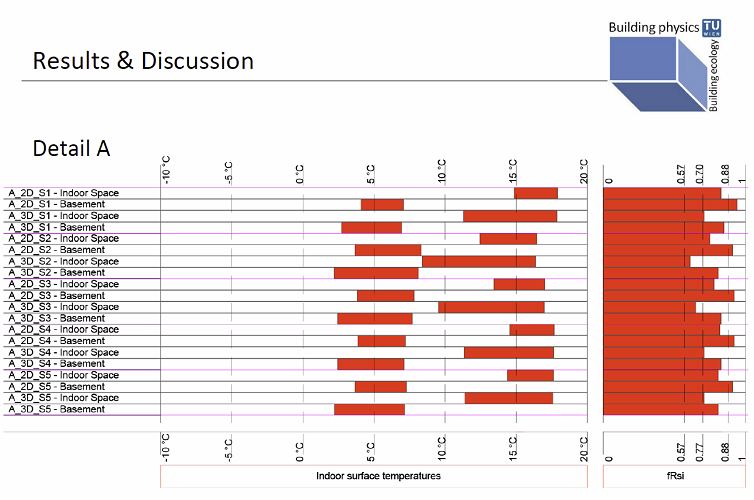
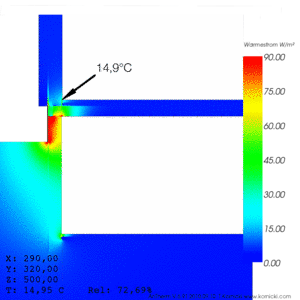
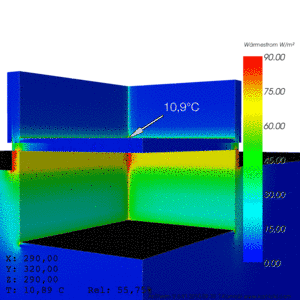
As this example shows only the 3D evaluation returns the actual minimal surface temperature.
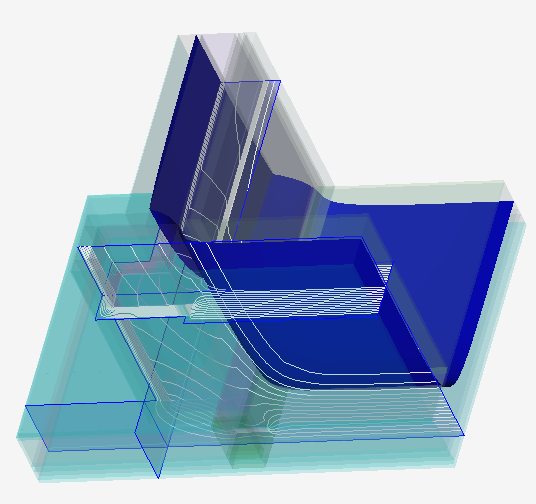
AnTherm 3D Project
AnTherm 3D Navigation (Video)
Explaining the 3D navigation within graphical evaluations (YouTube Video, 1' 50'')
Further videos available at the AnTherm Channel on YouTube.









